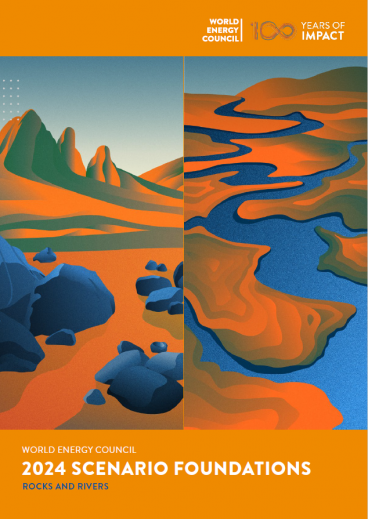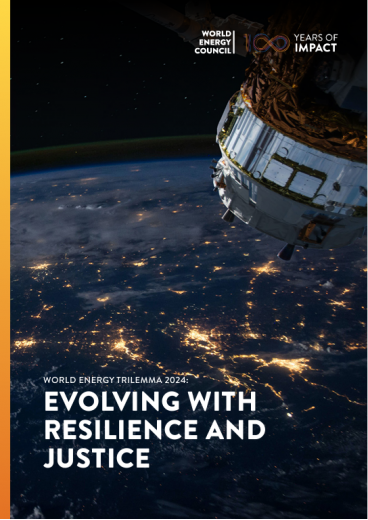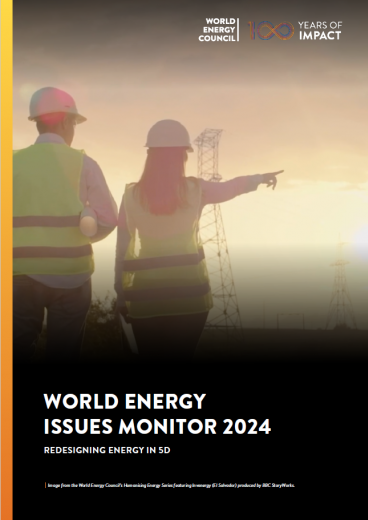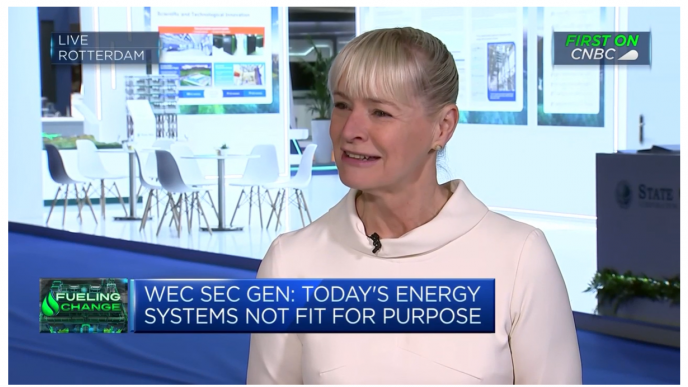Reflections from St Petersburg, Russia: Overcoming Polarisation in International Energy Dialogues
Dr Angela Wilkinson, Secretary General and CEO, World Energy Council
A time to humanise, not demonise energy transition solutions
Last week, I completed my first international business trip in over 14 months to attend the St Petersburg International Economic Forum (SPIEF) in Russia. During the same trip, I participated to the Clean Energy Ministerial (CEM) meetings hosted by Chile on the other side of the world. This global perspective has once again made clear to me that energy transitions are happening everywhere – overshadowed far and wide by extreme polarisation. Regrettably, the global energy leadership landscape is also becoming increasingly fragmented.
As we emerge from a once in a lifetime global crisis, the role of the World Energy Council as a global network, deeply rooted in local, ‘road building’ energy communities has never been more important.
Humanising Energy gains momentum
Our Humanising Energy imperative is quickly finding more approval and support on the global energy stage as the most promising way to secure global commitments for both people and planet. Humanising Energy is our push to involve more people, at every step of the energy value chain, in turning over and building new energy systems faster than ever before. Among the commitments that this imperative supports, universal access to energy by 2030 and climate neutrality by mid-century come to mind first.
Only by fully engaging with the increasing diversity of energy systems can we ensure that their equally varied energy transitions are done in a clean and just fashion. Engaging with transitions in these terms means doing so in the broadest sense, across people and skills, use and needs as well as technologies and cultures.
In this regard, we are particularly encouraged by the excellent reception of our action to increase energy literacy and the support for our ‘learn by doing’ energy transition sprints in cities and large community cooperatives.
“Eye to Eye Contact”
My initial concerns about international travel faded quickly. The St Petersburg International Forum showcased a successful system for delegate safety at large international gatherings in a post pandemic world. It inspires confidence for a truly international gathering at next year’s World Energy Congress. Digital events cannot match the quality of physical face-to-face meetings. You just can’t beat ‘eye-to-eye’ contact, even with the inconvenience of face masks, regular covid testing and socially distanced seating.
During this trip to St Petersburg, I had the honour of visiting the Command Bunker at the centre of operations during the WWII siege of Leningrad, which lasted more than 800 days. It is a humbling and inspiring reminder of the resilience and solidarity of people during challenging times. The experience renewed my resolution to meet the challenge of involving even more people in co-creating sustainable and resilient energy transition pathways – a challenge only the World Energy Council is in position to face.
Whilst in St Petersburg, I explained to delegates why the theme of the 25th World Energy Congress is “Energy for Humanity”. My parallel attendance of SPIEF and CEM illustrates the Council’s unique ability to reach across energy systems, policies, and technologies to provide an experience of global community. Therefore, “Energy for Humanity” will be about meeting the shared and individual challenges of energy in the service of people and planet and balancing the policies that will secure sustainable energy for the benefit of all people.
A decade of delivery
Our worldwide Council agenda promotes a new era of cooperative “action learning” in a pivotal decade of delivery.
I must stress that an inclusive and open energy agenda, like the Council’s, is indispensable to overcome the misconceived idea that energy can only be mindful of either people or planet, but not both at the same time. What’s more, the opposition between “narrow green” principle and “broader sustainable” pragmatism immobilises progress under a mass of hypothetical net zero policy scenarios and normative road maps.
Beyond the paralysis and hesitation of “what ifs” and “should do” of these schools of thought, actual solutions are driven by the clear reality of a “how to” approach, firmly grounded in multiple pathways for clean, affordable, reliable, and equitable energy. We at the Council have seen the success of this approach across our global network, with unique solutions emerging in each region, each country.
While “Green-only” thinkers believe pragmatism only leads to inertia, the outcome of purely “Green” energy transitions would leave many behind without access to power. In response, the supply-side of energy transition is being ramped to ever larger proportions by investing in renewables, hydrogen and carbon capture providing little space for societies to involve themselves in transition.
But even the most optimistic observers are concerned such large-scale ambitions may not be the healthiest option for diverse societies, a diversity which translates into transitions with different starting points and paths towards net zero. Clean and just energy transitions will not be realised by a single optimised solution, but by embracing the multiplicity of transitions ahead of us.
Managing the differences between the price, affordability, and cost of energy
The “Green-only” partisans will find this out the hard way as more and more governments rush to set arbitrary targets and timelines with no coherent plan for meeting them and little understanding of their economic impact.
There are big differences between the market price of an additional unit of energy and its value to society, between the reality of what customers can afford and that of full-systems costs. Accepting and working with the diversity of energy transitions highlights the need for better energy literacy. Societies everywhere must be able to understand what these choices mean for them as well as what and where the costs will be.
For transitions to be inclusive and leave no one behind, we must look ahead and identify the actors that will become the winners and losers of this process. By doing so, we will avoid the risk of stranded communities and supply chains and manage the financial risk of faster stranding of assets. Taking “Green-only” to scale will involve nothing short of a fundamental reform of national tax systems, few of which are ready or capable of taking such a drastic step.
In my view, it has now become crucial for societies to better understand that new models of sustainable development, mindful of both their human and economic impacts, will require more energy, at least in the medium term.
With 90% of humanity still transitioning to sustainable and productive energy access, it has become abundantly clear that a “Green-only” approach will not be able to achieve the momentum necessary to provide solutions to individual transitions. Clean heating, clean cooling, along with clean molecules in liquid fuels will be needed for decades to come, with no technological quick fix on the horizon or radical “green” solution that will see to everyone’s needs.
Energy transitions are socially messy journeys which must be financially and humanly sustained over generations. There exists a silent majority in energy which has yet to find out how much energy transitions cost and questions about who is really going to pay for them are being asked.
It is time for governments and businesses to involve people and communities impacted by energy transition in order to reconnect market price with social value. Doing so will help them to understand what energy is used for and what behaviours and practises frame these uses. It is time to overcome the polarising opposition of “green” and “pragmatic” views and let the “road building” voices prevail if we are to achieve transitions with shared values of justice and sustainability.
The way forward: involving more hands, hearts and minds
Making transitions happen is a question of action rather than words. Still, we must have the conversation that allow us to find common ground and learn as we move forward. Transitions are innovative endeavours that require us to find solutions even as we implement them, never stopping at the promise of a single piece of technology or legislation.
The World Energy Council is moving to involve more people across sectors and levels of society to form 'road building' communities around the world. These communities bring together the practitioners, experts and leaders who are on the frontlines of their transitions.
We focus on helping these 'road building' communities increase the pace of their energy transitions by fostering a ‘learn by doing’, or ‘action learning’ approach. Our Humanising Energy imperative is about involving even more people in better quality dialogue. Our new and evolving WE Talks series reflects this, even we take our role as another ‘road building’ community by helping to find the common ground that will lead to more effective collaboration.
I am convinced we need to move beyond ‘talk’ and focus on accelerating action as climate and economic deadlines loom. It is challenging, thrilling, and humbling to be part of the world’s oldest and most open energy ‘road building’ community.
I have returned from St Petersburg with an even greater sense of purpose and determination to change. With our agenda for ‘action learning’ starting with cities undergoing transition, I am confident we will rise to the challenge of transition together.
For media queries, please contact us at communications@worldenergy.org






_688_387_s_c1_c_c.jpg)

